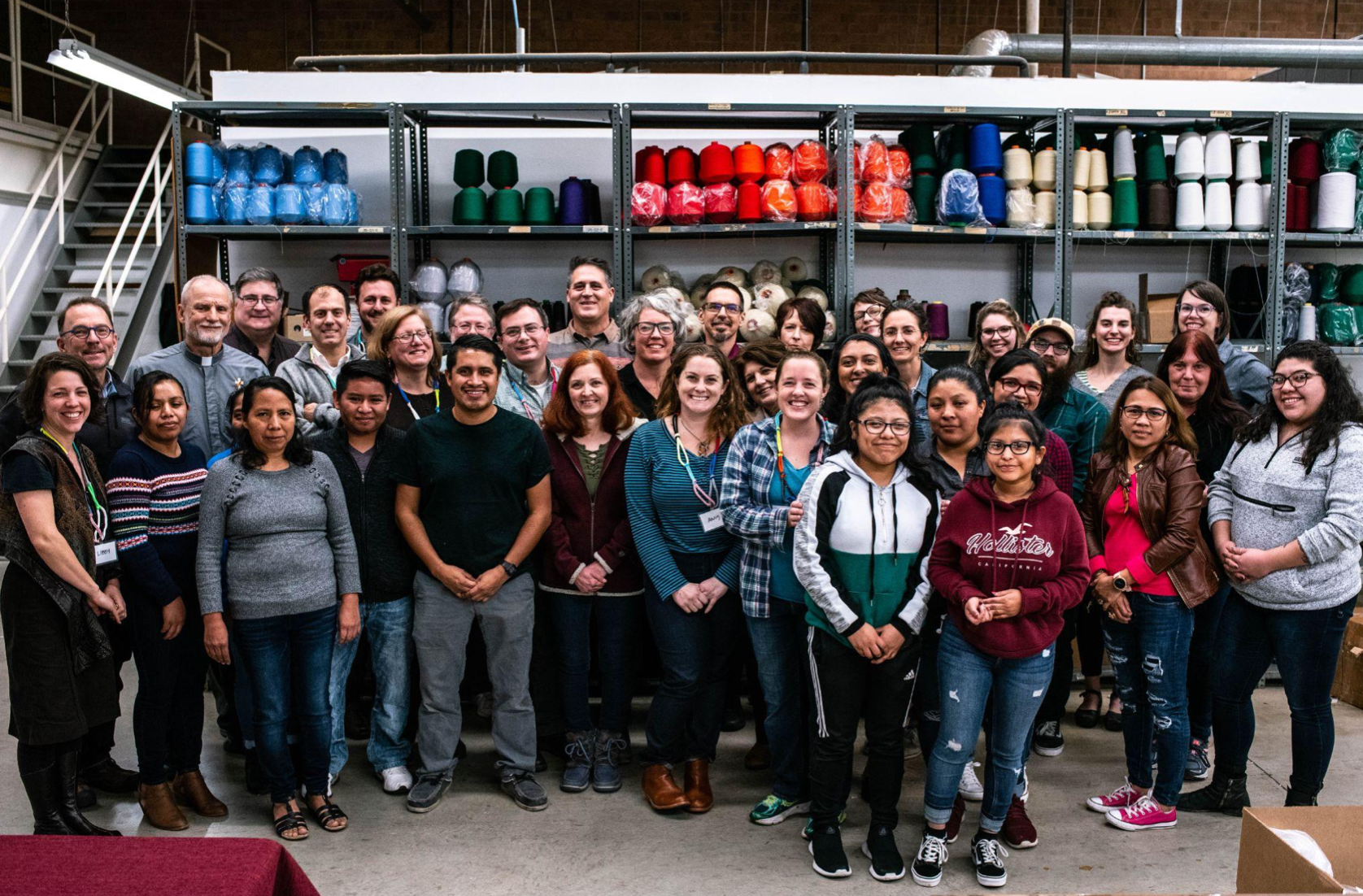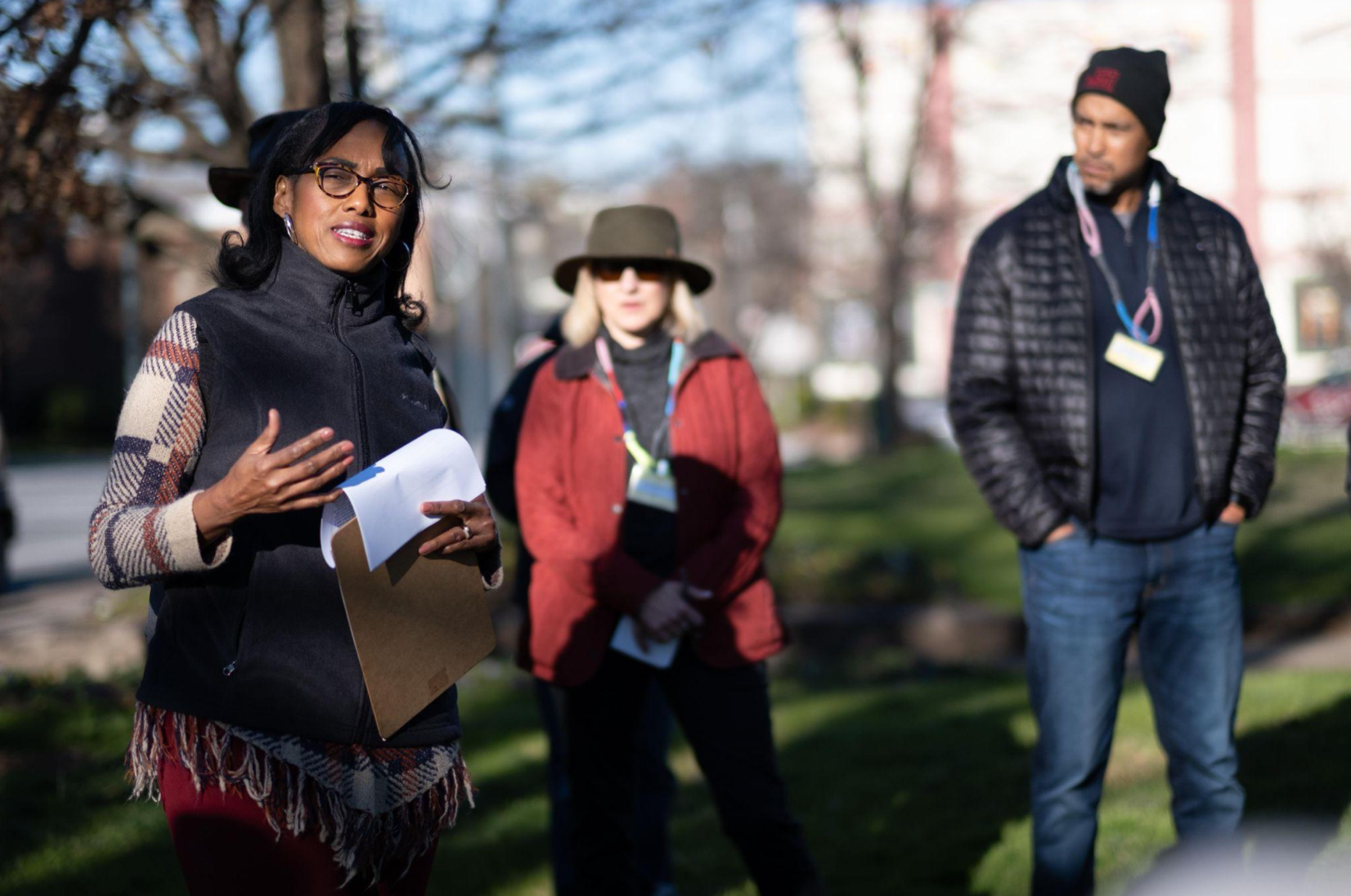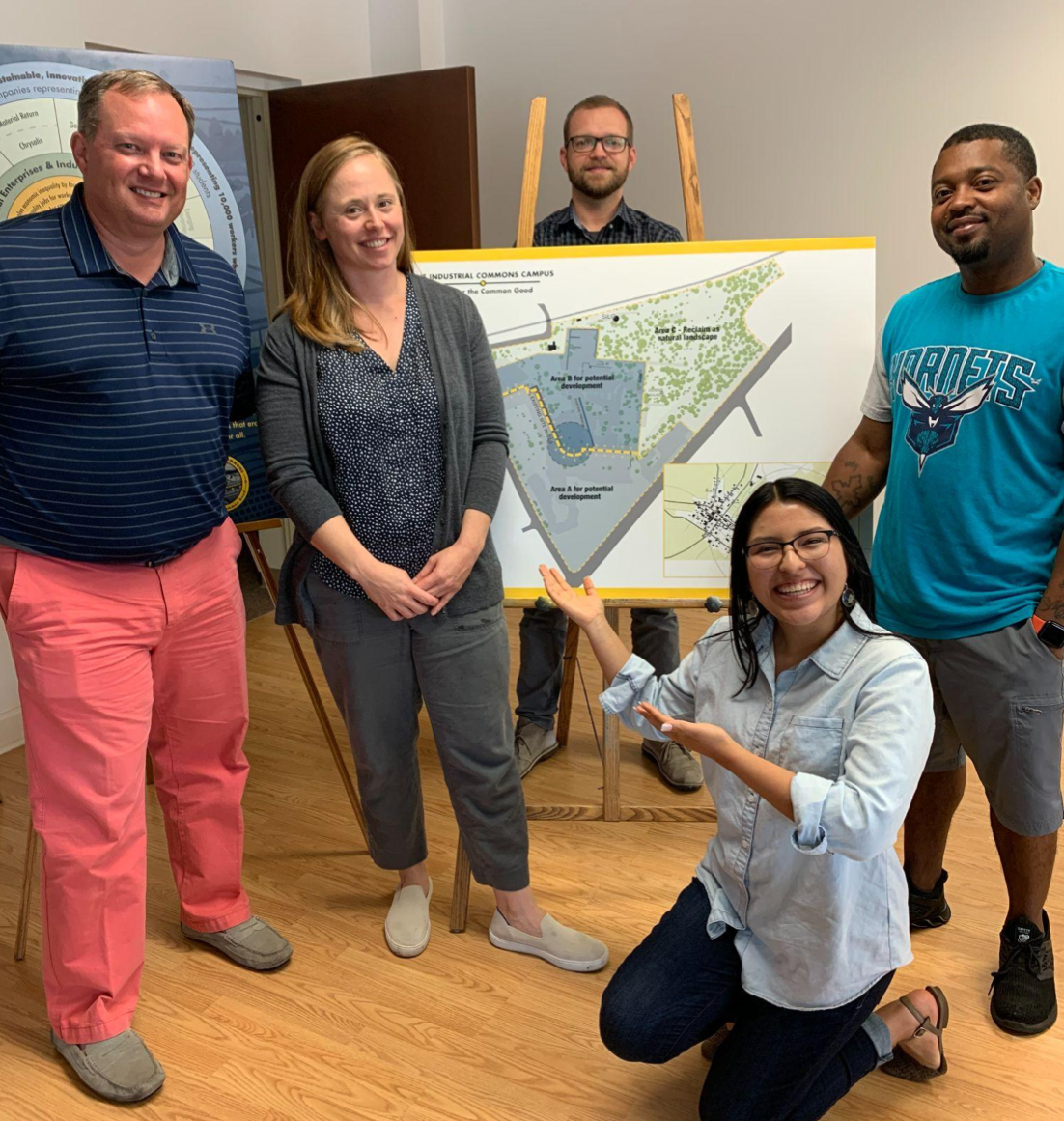In the foothills of western North Carolina, the small town of Morganton is home to a growing co-op movement that’s reinvigorating the region’s once-struggling textile and furniture manufacturing industries, and refashioning them around egalitarianism and localism.
This expanding collective of frontline workers and artists is changing the way people there view industry and the nature of work.
From sharing to solidarity
The birthplace of bluegrass and home to the oldest mountain range east of the Mississippi River, Southern Appalachia is not only fertile soil for the sharing economy, but a co-op-driven movement known as the solidarity economy.
Aimed at generating locally rooted wealth and ensuring its equitable distribution, the solidarity economy is fiercely democratic.
For Sara Chester, co-executive director and founder of The Industrial Commons (TIC), a 501(c)3 organization that fosters employee ownership, in a solidarity economy “workers are appreciated not just for their labor but their ideas, insights, and innovations. Workers are not just a piece of the business, they are the reason the business exists.”
Sometimes referred to as the co-op model, this approach is about creating prosperous and resilient communities by emphasizing worker agency and ownership, environmental sustainability, and the value of place.
Workers are not just a piece of the business, they are the reason the business exists. — Sara Chester, TIC co-executive director and founder
According to Tea Yang, manager of values and culture at TIC, co-ops offer a “system wide approach to ensuring everyone benefits” from a business, as compared to exploitative entrepreneurial models that tend to treat workers like expendable resources.
The power of the worker coop model can be found not only in its egalitarianism but its solution-making mechanism.
“Those closest to the process know the issues and solutions best,” Yang continues. “It’s a matter of giving them a voice, the opportunity for leadership development, and the organizational structure to enact change.”
In Morganton, TIC continues a long tradition of cooperative and solidarity movements in Southern Appalachia.
According to the “2021 Worker Cooperative State of the Sector” report, produced by the U.S. Federation of Worker Cooperatives, North Carolina is the eighth largest worker co-op state in the country, with more than 20 democratic or worker-owned workplaces.
Raised in Morganton, Chester believes the solidarity economy goes hand in hand with the region’s character and topography.
“I think there is something about Southern Appalachia and being in the mountains that have instilled a spirit in individuals and communities of a cooperative mentality,” she says.
With resources being scarce and communities often isolated, there is a long history in Southern Appalachia of individuals working together to achieve their goals.
She believes this ethos has been further nurtured by other newcomers bringing “a spirit of cooperation to our region,” including a large immigrant Guatemalan/Mayan community.
Reclaiming, renewing, rebuilding
Due to the region’s abundant timber, furniture manufacturing once thrived, but economic instability has plagued Southern Appalachia for decades. TIC is working deliberately to overcome that, Yang says, and capture the energy of the region’s “deep and rich history in textile and furniture craftsmanship and manufacturing.”
Once considered the furniture capital of the United States, North Carolina lost more than half of its furniture manufacturing jobs between 1999 and 2009, according to the Federal Reserve Bank of Richmond.
In part, this is a result of large manufacturers moving business overseas, often where worker wages are considerably lower than domestically—alongside other less worker-centric policies.
TIC’s bold goal, to rebuild “a diverse working class based on locally rooted wealth,” is a common refrain among team members.
What makes [Southern Appalachia] prime grounds for co-op and circular economic development is that we’re not trying to replace these existing industries, but revitalizing them by doing the work in a way that benefits everyone and the environment — not just a few people. — Tea Yang, manager of values and culture at TIC
Aware of the region’s strong cooperative spirit, Chester, TIC co-founder, saw an opportunity to enhance what was happening and wanted to ensure that local economic growth wasn’t being concentrated, but rather “shared by everyone in our community.”
TIC grew out of Opportunity Threads, a worker-owned, cut-and-sew textile plant started by Molly Hemstreet in 2008. Hemstreet and Chester met in 2012, and shortly thereafter founded the Carolina Textile District, which eventually evolved into TIC in 2015.
TIC is an incubator for regional co-ops and service programs, including the Carolina Textile District, a member-governed collection of textile manufacturers in North and South Carolina; Material Return, which uses a circular economic model to transform textile waste into new products; and Good Books, a worker-owned, women-led, cooperative bookkeeping group for the many coops and businesses in the region.

Photo Credit: The Industrial Commons, Shannon Hanson
Ashley Dula, a training and hospitality coordinator for the Carolina Textile District and head instructor of their youth sewing program, says her students start with repairing their own clothes, and later develop a “skill set for potential employment. The income provided by these skills gives students the opportunity to have an affordable lifestyle in the community versus working an odds-and-ends job.”
Among these more explicitly economic endeavors are arts and educational programs, such as TOSS, a collection of arts initiatives in Morganton, including writing, murals, and art classes for children, designed to foster TIC’s shared values of solidarity economics, racial justice, and environmental sustainability.

Photo Credit: The Industrial Commons, Jesse Barber
Hometown Walkabout (HW), a guided, educational tour of regional cultural landmarks, highlights the diverse ethnic, racial, and cultural history of the surrounding county, which may surprise participants who hold very different expectations for the demographic makeup of a small Southern Appalachian town. These include a statue celebrating local African-American blues artist Etta Baker and sites related to the “Maya of Morganton,” to name a couple.
HW tours facilitate challenging conversations around race and community. For instance, participants discuss the implications of a 20-by-30-foot Confederate flag that furls next to I-40 as visitors drive into Morgonton, a protest by the Sons of Confederate Veterans against the movement by other Southern Appalachians who want to take down Confederate Statues and other related symbols—including a county monument in downtown Morganton.

Photo Credit: The Industrial Commons, Franzi Charen
The program connects participants with personal narratives and conversations about the diversity of the region, and has been designed and offered to specific cohorts in the region, including attendees from UNC Healthcare, Western Piedmont Community College, and the North Carolina School of Math and Science, a residential high school focused on STEM, which recently opened a new campus in Morganton.
Some models of change focus exclusively on economic development as a means of addressing poverty, but TIC asserts a more well-rounded and grassroots approach is needed.
”We know that providing a good job that pays a liveable wage is not the only solution to eradicating generational poverty, so we take a system-wide approach that includes bringing racial equity, diversity, and inclusion to the forefront of all of our work.” says Tea Yang. “So much of systemic racism is directly tied into economic mobility and stability.
Making a better place — for everyone
When asked whether there has been much pushback from the wider community — businesses, government, or residents — Sara Chester says she has “never had anyone approach us as a critic.”
People are mostly just curious, she says, which is why TIC has prioritized keeping its doors open, and being as collaborative with the community as possible.
TIC has strong partnerships and collaborations with local, city, county, and state governments, Yang notes. This may be due, in part, to their nonpartisan focus on making material changes.

Photo Credit: The Industrial Commons, Franzi Charen
“No matter the political spectrum of our partnerships,” she says, “our interests are aligned in the shared desire to develop a vibrant and thriving economy and that is something everyone can get behind.”
Nonetheless, challenges remain.
For instance, North Carolina is a right-to-work state, where state laws make it difficult for workers to unionize or have greater leverage when negotiating with employers.
While this may not completely undermine the co-op model, Yang believes it is one of their “biggest challenges,” especially as TIC helps businesses transition into worker-owned enterprises.
However, she hopes that TIC’s vision will help people become more open and interested in the co-op model.
“We do not shy away from criticism or curiosity,” she says. “We invite anyone who is skeptical about our work to engage with us and learn more about the ‘why’ behind our mission.”

Photo Credit: The Industrial Commons, Molly Hemstreet
TIC’s work always comes back to strengthening relationships with members of the local community — giving everyone the means to stay in a place, liberated from the pains of poverty.
“I’m from here and hope to live here for the rest of my life,” Chester remarks. “Being committed to place allows you to go deep where you live and not be worried about moving on to the next professional step or location. We’re here and we want our community to be a better place — for our children and grandchildren and everyone else’s children and grandchildren.”









